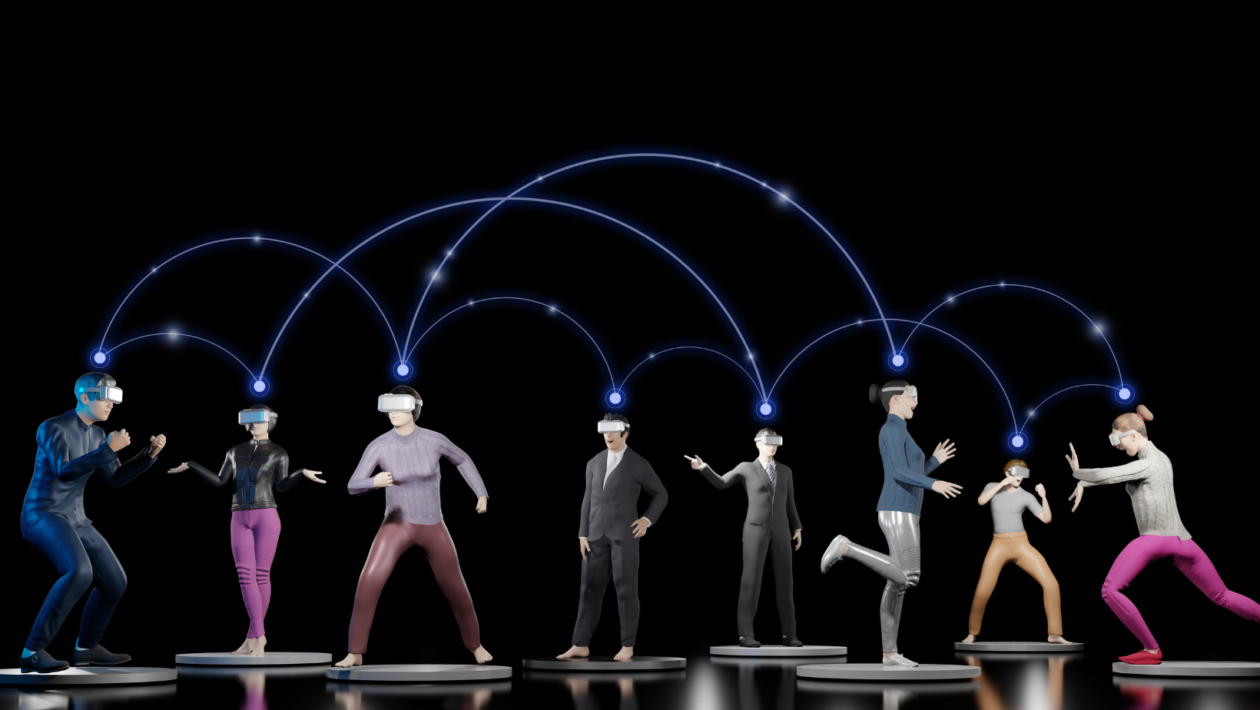The metaverse will probably look a tad different than what you imagine it to be. A tiny bit less ridiculous, a good amount of abundance and a whole lot more… real. And yes, you will be wearing a headset, acting as an “entry point.”
We are, without a fraction of a doubt, seeing explosive growth when it comes to all things metaverse, non-fungible tokens (NFTs) and digitalization. The thing is, though, we are still in the beginning of it all and are very much in the early innings of the metaverse and its real-life applications.
As with any other paradigm-shifting new addition to our day-to-day lives, it is difficult to properly imagine and visualize what it will look like in the near five-year future, let alone how it will develop and grow in a few decades.
That being said, the last couple of years have established a direction of sorts and given us a loose north star to build and ideate towards. At the same time, the last decade’s worth of metaverse experiments has also offered a glimpse into what the future could look like.
The metaverse in our lives
First of all, there will be a number of metaverses forming one all-encompassing metaverse, not just one, similarly to how countries are set up — each with its very own and distinct cultures, communities, environments and perhaps even languages! We’re working on a number of different metaverses here at Sortium, and the diversity behind those experiences reflects what I think all consumers will see as this market really comes to life.
All of these varying metaverses will eventually be interconnected and, most importantly, interoperable. That is, of course, if the promise of Web 3.0 comes into fruition. While existing independently, this plethora of metaverses will also function in unison, meaning denizens will be able to move (ideally freely) from one to the other and explore the various experiences each one has to offer.
The whole of the metaverse, composed of all these “mini metaverses,” will most likely enhance our reality, and not fully displace it with an alternative one. Many people think the concept of the metaverse is a strictly virtual world. That’s not the point.
Rather, it will add to what we know and can see around us and enable us to customize our environment in a myriad of detailed ways, making us more productive, more creative, and happier. It’s going to be a more augmentative process and not one of replacement.
So how are we going to enter the metaverse?
With a sick pair of wireless headsets of course! Picture Google Glass or Snapchat Spectacles. Now think about what those look like now and then remember what phones used to look like 20 years ago.
Given the exponential growth trajectory of all metaverse-related tech (blockchain, VR/AR, computers), we are most likely going to get a version of Google Glass or Snapchat Spectacles, but on steroids — small, practical and filled with technology we can’t quite picture yet, at least not completely. This headset will then act as your entry or login into the different sets of metaverses, the way how your house keys enable you to, well, enter your house.
NFTs and the metaverse
NFTs are so early. They have endless potential and what is being done right now really isn’t the endgame. Far from it, actually — we are just seeing the first attempts at the technology, which will seem almost ridiculous at some point in the future.
PFPs and club passes, while very much viable use cases, are just scratching the surface of what NFTs will become. In the metaverse, NFTs will be objects, environments, immersive experiences, digital land, people, tangible things you will be able to touch and experience, and, naturally, purchase if you so desire.
NFTs will, inevitably, come to life and form the foundation of the plethora of metaverses coming our way. The way we interact with “things” in the real world right now will be expanded to the realm of the digital and NFTs will play an absolutely pivotal role in that. NFTs will be property — digital real estate and digital identities.
Wearables and skins will be huge. With an inherent need to flex and stand out, we humans are bound to take that into the metaverses we will be frequenting.
Corporations and the metaverse
What is perceived by many folks in crypto as a looming threat to an open, free and interoperable metaverse is the corporation. Or, well, corporations.
Facebook’s plunge into Web3 and timely rebrand to Meta signified a monumental shift in sentiment towards all things metaverse. Effectively acting as an okay sign, corporations’ moves to enter the space translate into an abundance of opportunities waiting to be realized.
And as much as crypto natives do not want corporations to be a part of the metaverse, they certainly will be — it is simply inevitable. Brands like Meta will frequent the metaverse in a way similar to today’s strip malls. They will not own the whole thing but will have their own dedicated plots, or stores.
Just to be clear, all this attention towards the metaverse from the likes of Big Tech is not a bad thing. Especially in the case of Meta, it is easy to pile heaps of hate onto Mark Zuckerberg as he has taken up the role of everybody’s scapegoat. But Meta will open a lot of doors and push the whole space forward while being one of the metaverses on display, not the Metaverse on display.
In terms of driving adoption, companies like Meta will probably do so for a vastly different demographic than the one currently developing all things metaverse. The appeal will be for older people who are already on Facebook, rather than, say, Gen-Zs who have largely abandoned being on Facebook anyways.
Somebody has to help the older generations try new things!
Work and the metaverse
This one will be absolutely huge and most people don’t realize it yet. Not even close.
The very concepts of “working” and “work” will be completely flipped come 2040. Envisioning a world where we are able to modify our environment and change what we do to earn a living into something more “fun” is not too far-fetched. As the last few years accelerated the transition toward an increasingly digitized world, it is quite likely we will come full circle within the next 18.
Now, this is where the real “metaverse” will spring up — right in the middle of the physical and the digital, acting as a bridge between the worlds and combining the best of each one. As our homes (and beach bars…) become de-facto offices and technology gets better, we will be able to tailor our surroundings down to each subtle detail, eventually creating an environment that inspires.
Zoom backgrounds will turn into full-fledged augmented reality rooms. Shaking hands at the end of a productive business meeting will be possible from one end of the world to the other, and everything we’ll need to create will be contained in a small device that also enables us to switch realities with a click of a button, or perhaps even at the end of a thought.
Exciting, isn’t it?





